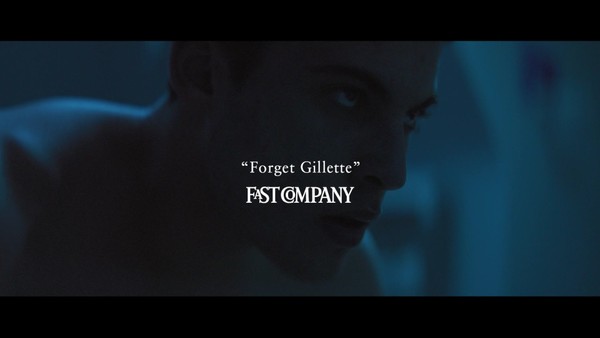Glass: The Lion For Change > Glass: The Lion for Change
SISTERH>>D CAMPAIGN
GIRLS WHO CODE, Los Angeles / GIRLS WHO CODE / 2019

Overview
Credits
OVERVIEW
Background
Girls Who Code was founded with the mission to get more girls involved in computer science, to change the image of what a programmer looks likes, and close the gender gap in technology. Concurrently with that mission, GWC has sought to expand upon that focus, and create a movement of girls dedicated to changing the world through technology. The brief was to create a campaign that would build brand awareness, and celebrate the core of their movement: sisterhood and activism. The objective was to inspire young women around the world to stand up, speak out, and support one another—correcting centuries-long power imbalances across lines of gender, race, sexuality, and more.
Describe the cultural/social/political climate in your region and the significance of your campaign within this context
Though the United States is one of the more progressive nations when it comes to women’s equality, women are still at a disadvantage, particularly in the workforce, simply because of their gender. This disparity is even worse in the tech industry. According to recent data collected by Evia, women occupy less than 20% of technology jobs in the United States, even though they make up more than 50% of the U.S. workforce. Girls Who Code is working to teach young girls about the possibilities of computer science, and the myriad ways they can create positive change through technology.
Describe the creative idea
The creative idea was a visual album: video “tracks” that explore different aspects of modern sisterhood, activism, & the relationship between the two. The concept was inspired by projects like Beyonce’s “Lemonade,” artistic statements in the form of music videos. These videos portrayed young women from different backgrounds, with varied goals & aspirations, & the many ways they hope to make a difference—or already area. Each video can be viewed individually, but the tracklisting does follow a narrative arc: beginning with stories of womanhood and female community, moving into hopes for the future and the Anthem, our rallying cry, and then moving into concrete examples of ways to get involved, and incite change.
Describe the strategy
This was the first marketing effort for the non-profit organization, and targeted young women, ages 13 - 24. The approach was to create a campaign that would resonate online and on social media, where that age group tends to spend much of their time. Representation was extremely important. We wanted to include girls and women from all different cultures and backgrounds, and to share their varied experiences and perspectives. We sought out talent—both in front of, and behind the camera—that would connect with this audience in an organic way. From the rapper Lizzo in Healing, to the illustrator Ashley Lukashevsky who created the visuals for On Being, and activist Cecile Richards in Ode, these were women that young girls could look to for inspiration. It was also important to include young girls, like Little Miss Flint, already making waves in their communities.
Describe the execution
The video tracks were released day by day in the lead up to the International Day of the Girl. Two films were premiered on Teen Vogue, and one on AdWeek. The album continued to garner press in the New York Times, Refinery29, Billboard, Bustle, and 18 additional publications. Each video was released via YouTube, and aggregated in a playlist, and was also shared across social media platforms. The landing page www.girlswhocode.com/sisterhood also served as a central hub for the album, as well as exclusive merchandise. On the International Day of the Girl, we also launched the social media activation #RaiseYourHand, asking people to share the causes that are closest to them. We saw participation from brands like AT&T and Barbie, as well as over 250 influential activists and icons from Billie Jean King to Chelsea Clinton.
Describe the results/impact
The campaign garnered over 103.7 million total impressions, with 12.4 million social media impressions across YouTube, Facebook, Twitter, and Instagram. It led to a 2% overall increase in brand awareness and 40,000 additional visits to the Girls Who Code website. Reading the comments and social media shares, so many girls called out specific people or moments they related to or were inspired by, and that was incredible, and really brought home the goal of the campaign. To create a community, and a connection.
More Entries from Glass in Glass: The Lion For Change
24 items


